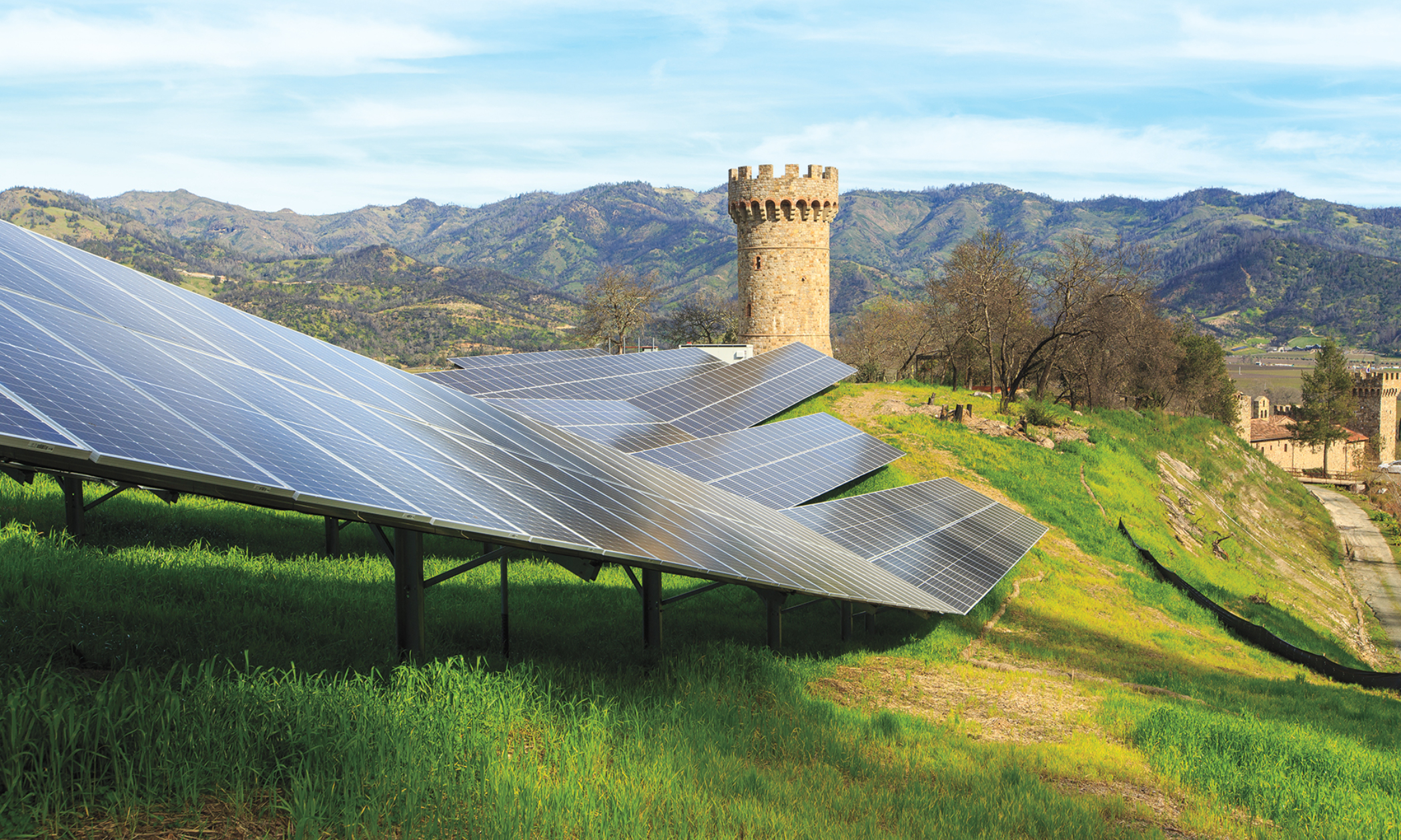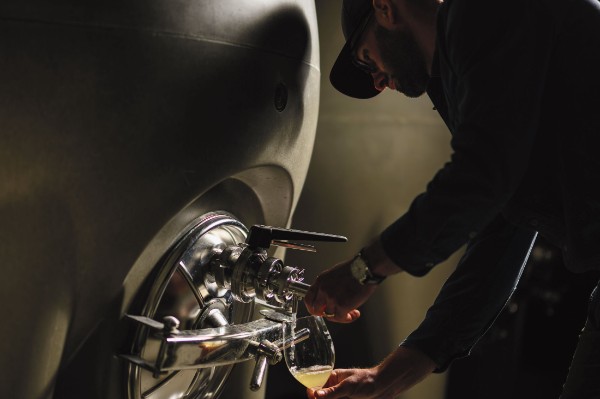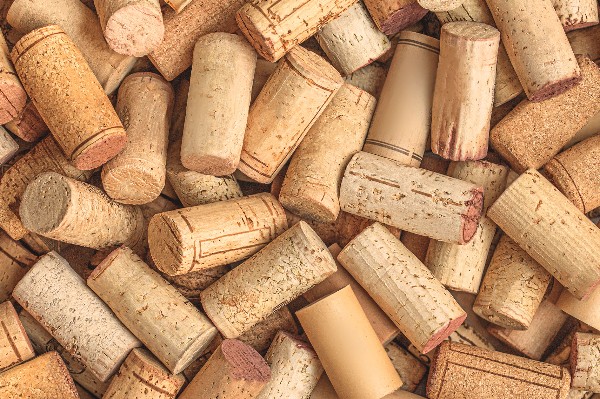It’s easy to get caught up in the enormity of what climate change is doing to our world in general and Napa Valley’s wine industry in particular. From the lengthening of fire season to droughts and more regular flooding rains that roll in from the Pacific, winemakers, grapegrowers, critics and consumers could be forgiven for occasionally feeling overwhelmed by the situation. Yet climate change has, surprisingly enough, been the catalyst for a number of positive changes, too.
Over the course of reporting and writing my book Crushed: How a Changing Climate Is Altering the Way We Drink, I regularly found my hopes being buoyed by the creativity, passion, resilience and vision of the people who grow the grapes and make the wines that have raised Napa Valley to the upper echelons of the world wine stage.
The importance of that cannot be overstated: Given Napa Valley’s role as the most well-known wine region in the United States, and the far more public-facing nature of viticulture than most other forms of agriculture, Napa Valley has both a unique opportunity and a deeply important duty to model the kinds of behaviors and to implement the kinds of climate change-mitigating actions that will only continue to grow in importance in the coming years and decades.
And unlike the popular perception that it’s the biggest projects that have the greatest impact, it’s also in smaller, less dramatic ways that Napa’s wine community is tackling this problem.
Georg Salzner is doing both at Castello di Amorosa. In addition to getting entirely off the PG&E electricity grid through an ingenious combination of solar panels and a battery micro-grid, he’s also installed a processed-water irrigation system. Yet Salzner has gone far more analog, too: In the late winter of 2023, he and his team took delivery of 50 sheep that he rented for six to eight weeks. They’re part of an experiment: On a block of his estate vineyard, which was already organically farmed, he fenced the sheep into one-half of it, allowing them to graze the area between the vines. On the other side, he used the tractor that he always employed. He and his team will be doing two separate fermentations after harvest to determine if there’s any qualitative or quantitative difference between the two. If the results are positive, then he will likely use them again next year, and on a larger percentage of his land, thus saving fuel (no need to fill up the tractor) and reducing the amount of organic fertilizer needed (nitrogen-rich sheep waste is fantastic in the regard).
“The purpose,” he told me, “should not be to sell more. It’s doing it for the right reasons. And when you do things for the right reasons, it often turns out to be better for quality.”
That’s a lesson that Anna Brittain, executive director of Napa Green, stresses as well. “The most basic foundation,” she explains, “is tracking and monitoring your resource use. Once you [measure], then you catch opportunities.” Napa Green helps its members look at the data and figure out what to do with it. “We make those cross connections... we talk about the water-energy-climate nexus,” Brittain continues. She adds: “Understanding what you’re using and keeping an eye on that is so essential.”
Tod Mostero, director of viticulture and winemaking at Dominus Estate, feels the same way. Wine growing, he notes, is a part of agriculture that’s in the public eye. As such, Napa’s vintners can both have a significant impact on climate change mitigation in general and show the way to others, pushing the limits of what the perceived possible is for agriculture writ large.
To do that, he and his team are working both in the vineyard and in the winery, as so many of Napa’s wine leaders are doing. For Mostero, it all starts with healthy soil that’s full of microorganisms that sequester carbon and provide more of the right nutrients that his dry-farmed vines need to thrive above the land and to build healthy, complex and deep root systems beneath it.
Those vines aren’t just the source of healthier grapes; they’re also more resilient, he points out, growing with a tighter grain that itself is more resistant to disease. A consequence of that is the need for fewer inputs, which allows the soil to thrive more. And healthy soil, not just teeming with microorganisms but also writhing with beneficial insects, helps to attract the animals that consume them for food, and then their predators in turn. Using nature itself to help combat pests and diseases leads to more biodiverse land, a more complete ecosystem and less of a need for treatments. Put simply, Mostero says, “When our land thrives, we make better wine.”
For the team at Dominus Estate, it’s only the beginning. “I think it’s just getting going,” he points out. “Just measure one thing, just one thing. Pick a thing that you like or an area where you’re not great in,” and work to improve on it. “The progress that you make is so inspiring that it gives you the energy to keep going.”
Jason Moulton, director of winemaking and viticulture at Whitehall Lane, shares the same mindset. “The change I’m trying to make is significant,” he explains, “and I’m doing it little by little.” He and his team are even bucking what has become received wisdom that using legumes as cover crops is the best practice. Instead, as part of his no-till regenerative farming regimen, he has planted 56 acres of Oakville bluegrass, which lasts approximately 10 years; unlike many of the legumes that have become so popular, it’s not a host plant to the alfalfa tree hopper. This, in turn, helps with the longevity of his vines, necessitating less frequent replantings. The Whitehall Lane team is also steaming barrels to clean them, which uses less water than the industry average. These efforts and so many others there are impressive and impactful.
At Larkmead Vineyards, which has been one of Napa’s more prominent leaders in sustainability, winemaker Avery Heelan and her team are continuing that proud legacy. In addition to washing their barrels in a more water-conscientious manner and using lighter bottles, they also are reducing the number of wines they produce, shrinking the size of their labels and even making changes to their packaging: Rather than each capsule and cork noting the name of that specific wine, all of them, starting with the 2021 vintage, will simply note that the wine inside is from Larkmead.
“Now,” she says, “our buffer zones can be massively reduced and we don’t have to order six to eight named corks. We’re ordering one.” This means acquiring more at once and cutting down on the carbon footprint associated with shipping. Larkmead has also switched to lighter six-pack shippers, which require less fuel to transport and are better for the workers who lift them.
Throughout Napa Valley, growers, winemakers and proprietors are all striving to stave off the most serious effects of climate change today, and to mitigate future ones, too. They’re embodying the axiom in Kimberly Nicholas’ excellent book, Under the Sky We Make: How to Be Human in a Warming World, going from a mindset of the sky is falling to learning how to live under the sky we make. It’s a crucial change in mentality and practical application. Everyone—from the people who are responsible for the great wines of Napa Valley to their legions of fans around the world—is benefiting from these efforts.




